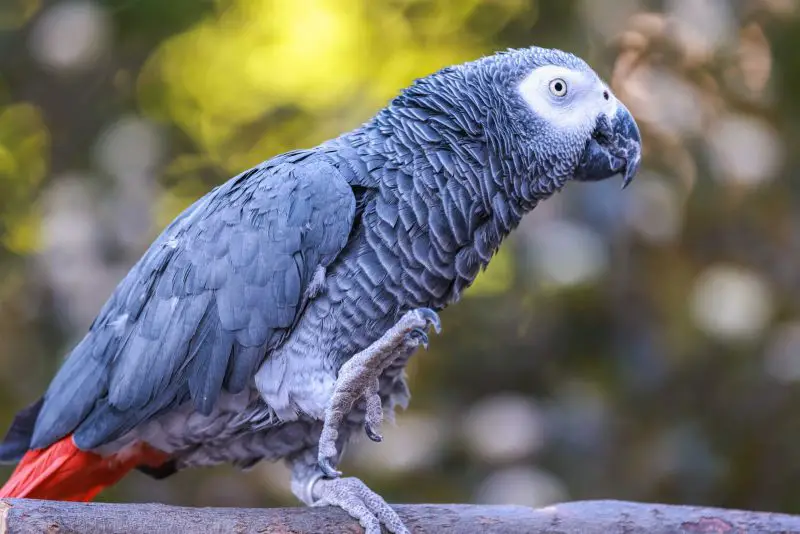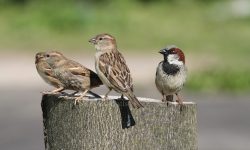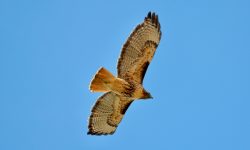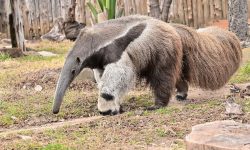Among the vast and colorful world of parrots, one bird consistently stands out for its extraordinary intelligence—the African Grey Parrot. Often hailed as “the Einstein of the bird world,” this species has amazed scientists, pet owners, and animal lovers alike with its cognitive abilities, emotional sensitivity, and speech mimicry. But what makes the African Grey so uniquely smart?

What Is the African Grey Parrot?
A Masterpiece of Evolution and Intelligence
The African Grey Parrot is a living symbol of avian brilliance. Belonging to the genus Psittacus, this species comes in two stunning forms—each with its own charm and subtle distinction.
The Congo African Grey (Psittacus erithacus) is the better known of the two, a graceful bird clad in soft, silvery plumage offset by a brilliant crimson tail. It’s the larger subspecies, exuding elegance and charisma with every flutter of its wings.
The Timneh African Grey (Psittacus timneh), though slightly smaller, boasts deeper grey tones, a duskier maroon tail, and a charcoal-colored beak. Its quieter coloring hides a personality just as sharp and engaging as its more colorful cousin.
Native to the lush rainforests of central and western Africa, these birds are built for survival in the wild—yet they have adapted seamlessly to domestic life. Their gentle demeanor, remarkable intellect, and expressive voices have made them beloved companions around the world.
Lifespan and Signature Look
African Greys are medium-sized parrots, measuring 12 to 14 inches from beak to tail and weighing around 400 grams. But don’t let their modest size fool you—these birds possess one of the longest lifespans among pet parrots, often living 40 to 60 years with proper care and affection.
Their appearance is as dignified as it is distinctive. Cloaked in sleek ash-grey feathers, with piercing amber eyes and a bold, hooked beak, they radiate both nobility and intelligence. Whether perched quietly or mimicking your every word, the African Grey is a presence you’ll never forget—poised, perceptive, and undeniably captivating.
Intelligence That Rivals Primates
Cognitive Powers Beyond Expectation
When it comes to brainpower in the bird world, the African Grey Parrot stands in a league of its own. Far from being a simple mimic, this bird exhibits mental capabilities that rival those of primates—and even young human children.
African Greys show an impressive grasp of problem-solving, abstract reasoning, and memory recall. They understand object permanence (the knowledge that things still exist when out of sight) and can distinguish colors, shapes, numbers, and comparative concepts like “bigger,” “same,” or “different.” Scientific studies have consistently demonstrated that these parrots possess the cognitive level of a five-year-old child—a stunning benchmark for any non-human animal.
Perhaps the most famous example is Alex the African Grey, whose decades-long participation in research with Dr. Irene Pepperberg changed how the world views avian intelligence. Alex could count, identify objects, comprehend categories, and even form short phrases with meaning. He wasn’t just a parrot repeating words—he understood them. Before his passing, Alex told Dr. Pepperberg, “You be good. I love you,” a moment that continues to touch hearts and redefine animal cognition.
Masters of Meaningful Speech
African Grey Parrots are the undisputed champions of vocal mimicry. But what makes them exceptional isn’t just their ability to repeat—it’s their ability to communicate with intent.
These parrots can build a vocabulary of hundreds of words, often using them appropriately and in context. Many African Greys learn family names, ask for favorite foods, greet visitors, or warn of approaching strangers. They’re keen observers of routines and can even anticipate actions—like mimicking a microwave beep before dinner or saying “goodbye” as someone puts on their shoes.
In homes, they become interactive companions, capable of initiating conversations, mimicking emotional tones, and expressing clear preferences. Whether it’s a heartfelt “I love you” or a perfectly timed laugh, the African Grey doesn’t just mimic your life—they become part of it.
Social Behavior and Emotional Intelligence
A Deeply Social and Sensitive Species
The African Grey Parrot isn’t just intelligent—it’s profoundly social. In the wilds of Africa, these birds live in tight-knit flocks, constantly communicating, bonding, and learning from one another. This instinct for social connection doesn’t disappear in captivity. In fact, it becomes even more important.
When kept as pets, African Greys often form deep emotional bonds with their human companions. They crave interaction, consistency, and companionship. Left alone for too long or deprived of mental engagement, they can suffer from loneliness, boredom, and even clinical depression. Some may resort to feather plucking or vocal distress—clear signs of emotional strain.
What truly sets them apart is their empathy. Many African Grey owners report their birds reacting to human moods, becoming quieter during times of sadness or acting more playful when their humans are happy. These parrots don’t just live with you—they tune in to you.
Training, Enrichment, and Building Trust
For an African Grey to thrive, mental stimulation isn’t optional—it’s essential. These birds flourish when challenged. Interactive puzzle toys, treat-hiding games, and daily problem-solving tasks keep their minds sharp and spirits high.
Training is another form of bonding. With positive reinforcement, African Greys can learn an impressive variety of commands and tricks. They can identify colors, shapes, and objects by name, fetch items, and even participate in short routines. Training sessions also strengthen your relationship, teaching your bird to trust and cooperate while preventing behavioral issues born from boredom or frustration.
Living with an African Grey is like living with a highly intelligent, emotionally aware toddler—one who never grows up. But for those willing to invest time and care, the bond that forms is among the deepest and most rewarding in the animal kingdom.
Diet and Physical Care
Fueling Intelligence: What African Greys Eat
A sharp mind starts with the right fuel—and for African Grey Parrots, nutrition is crucial not just for physical health but also for maintaining their extraordinary cognitive abilities. These birds require a varied and balanced diet that mirrors what they might find in the wild.
A base of high-quality formulated pellets ensures consistent intake of essential nutrients. To this, add daily portions of fresh vegetables like dark leafy greens, bell peppers, carrots, and broccoli for vitamins and antioxidants. Offer fruits such as apple slices, berries, or papaya in moderation—these add variety but are naturally high in sugar.
Calcium is especially important for African Greys, which are prone to calcium deficiency. Cuttlebones, mineral blocks, or supplements recommended by an avian vet can help prevent related health issues like weak bones or seizures.
Creating a Healthy Living Environment
African Greys are active and curious by nature, so their environment should reflect their need for movement and exploration. A properly sized cage—at least 3 feet wide, 2 feet deep, and 4 feet tall—gives them room to stretch their wings and climb. Include multiple perch types of varying textures and diameters to promote foot health and prevent arthritis.
But the cage is only a base camp, not a home. African Greys require daily out-of-cage time in a safe, bird-proofed area where they can interact, exercise, and explore. Offer climbing trees, swings, ropes, and puzzle toys to stimulate both their bodies and minds.
Keep the space draft-free and well-lit, ideally with access to natural light or full-spectrum bulbs to support their circadian rhythms and mood. Without regular social interaction and freedom of movement, these intelligent birds can quickly develop boredom-related behaviors like feather plucking or excessive screaming.
Providing proper care isn’t just about meeting physical needs—it’s about creating a lively, enriched world that keeps their body healthy and their mind constantly engaged.
Common Health Concerns
When Smart Birds Suffer: Feather Plucking and Emotional Distress
One of the most heartbreaking signs of distress in African Greys is feather plucking—a behavior rooted not in vanity, but in deep psychological turmoil. These birds are emotionally complex, and when they experience chronic boredom, anxiety, or a lack of social interaction, they may begin to pull out their own feathers. This is more than a behavioral quirk—it’s a cry for help that signals something is fundamentally wrong in their environment or care routine.
Without enough mental stimulation, attention, or environmental enrichment, even a well-fed African Grey can fall into a cycle of stress that leads to long-term behavioral damage.
Calcium Deficiency: A Silent Threat
African Grey Parrots are also uniquely prone to calcium deficiency, which can result in a dangerous condition known as hypocalcemia. Calcium plays a crucial role in muscle control, nerve function, and bone strength. When deficient, these parrots may exhibit tremors, poor coordination, seizures, or even sudden collapse.
In many cases, symptoms go unnoticed until the condition becomes serious. That’s why a calcium-rich diet and appropriate supplementation are essential—particularly for birds fed mostly seeds or without access to natural sunlight or full-spectrum lighting.
The Role of Professional Care
Because of their long lifespan and complex biology, African Greys require more than just attentive owners—they need skilled veterinary oversight. Regular checkups with an avian-certified veterinarian can detect early signs of nutritional imbalance, infections, or organ dysfunction.
Essential care includes:
-
Routine blood work to monitor nutrient levels and overall health
-
Beak and nail trims to prevent overgrowth
-
Behavioral evaluations to address stress or aggression early
Catching issues before they escalate not only improves quality of life but can add years to your bird’s lifespan.
African Grey as a Pet: Is It Right for You?
A Lifelong Companion, Not a Casual Commitment
Welcoming an African Grey Parrot into your life isn’t just getting a pet—it’s embracing a decades-long relationship with one of the most intelligent and emotionally complex animals in the world. With lifespans often exceeding 40 to 60 years, these birds demand more than food and shelter. They crave mental stimulation, daily conversation, problem-solving opportunities, and most importantly, companionship.
They’re not suited for owners who are frequently away from home, or for those looking for a low-maintenance pet. Left alone or understimulated, African Greys can become withdrawn, depressed, or develop behavioral issues like screaming and feather plucking. They need your presence, your voice, and your consistency.
The Joy of a Feathered Mind
For dedicated and attentive owners, however, the rewards are extraordinary. African Greys offer an unmatched level of interaction—not just mimicry, but genuine communication. They learn routines, respond to names, ask for specific foods, and even crack jokes. Many owners describe their birds as “feathered toddlers”: inquisitive, affectionate, mischievous, and always learning.
Their loyalty is deep. They remember voices, recognize faces, and form lifelong bonds. Whether they’re chirping a favorite phrase, performing a new trick, or simply sitting quietly by your side, African Greys become true family members, capable of bringing joy, laughter, and a profound emotional connection every day.
Conservation and the Wild African Grey
Vanishing Voices of the Forest
In their native rainforests across central and western Africa, African Grey Parrots once filled the canopy with chatter, mimicry, and song. Today, those vibrant sounds are fading. Wild populations have suffered dramatic declines—some regions have lost more than half of their Greys—due to rampant deforestation, poaching, and the illegal pet trade. These intelligent birds are trapped and sold for profit, often enduring inhumane conditions and high mortality rates before ever reaching a home.
Recognizing the crisis, international authorities have listed African Greys under Appendix I of CITES, the highest level of protection. This designation bans almost all international commercial trade of wild-caught individuals, marking a crucial step toward their survival.
A Global Effort to Protect a Global Icon
Conservationists and organizations across Africa and beyond are working to safeguard the future of the African Grey. Their efforts include protecting natural habitats, enforcing anti-poaching laws, rehabilitating rescued birds, and promoting community education that shifts local economies away from wildlife trafficking.
As bird lovers and prospective pet owners, we can help by supporting ethical breeding, never purchasing wild-caught birds, and raising awareness about the plight of these incredible parrots. Every responsible choice ripples outward—helping ensure that the African Grey’s intelligence, voice, and beauty remain a part of both our homes and the wild landscapes they came from.
Conclusion
The African Grey Parrot is more than just a talking bird. It’s a creature of depth, intelligence, and emotion—a true marvel of the avian world. Whether admired in scientific studies or cherished as a lifelong companion, this parrot continues to redefine what we thought birds were capable of. For those who understand their needs and are ready for the responsibility, the African Grey offers an unparalleled experience in companionship and wonder.






